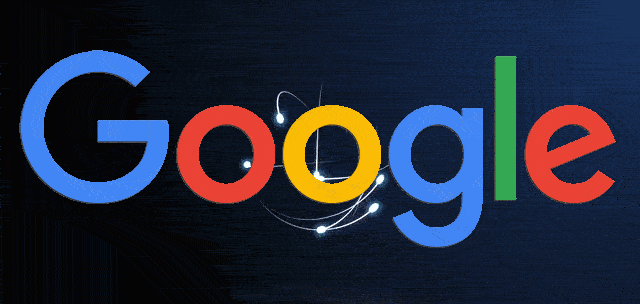Website Architecture is Vital for Optimal Web Page Indexing. If your goals is placement on Search Engine Results Pages (SERP’s), then sound Website Architecture is mandatory.
Think of a website as a house for a moment. Ideally, we would love for all visitors to enter through the front door (or homepage). In reality, visitors enter our sites on several different landing pages. Keeping our house analogy in mind, they enter from the side windows, the back door, the garage door, the upstairs window, and even the chimney. It’s important to optimize each and every page in order to maximize exposure of and every page.
Search Engine Algorithms are based on a Simple Premise
Searchers want an answer to their query. For any search, there are hundreds or thousands of sites that offer a potential link or insight related to that query. As a result, search engines need to accomplish three goals:
- Disqualify web pages that are not relevant
- Return a list of web pages that are relevant
- Rank and prioritize those pages in order of relevancy credibility
Google typically makes 500-600 updates per year to its “search” algorithm. No update has had a bigger impact on how websites are ranked and how each corresponding webpage is indexed than Google’s 2014 Panda Update. In order for Google to prioritize page rank for any given search, Google now takes into account over 200 factors.
Google’s goal is not only to prioritize pages in order of importance for a “search” but also takes into account how the page is constructed.
Other Factors which are vital for optimal Website Architecture:
- Keyword in Title Tag: The title tag is a webpage’s second most important piece of content (besides the content of the page) and therefore sends a strong on-page SEO signal.
- Title Tag Starts with Keyword: According to Moz data, title tags that start with a keyword tend to perform better than title tags with the keyword towards the end of the tag:
- Keyword in Description Tag: Another relevancy signal. Not especially important now, but still makes a difference.
- Keyword Appears in H1 Tag: H1 tags are a “second title tag” that sends another relevancy signal to Google.
- Keyword is Most Frequently Used Phrase in Document: Having a keyword appear more than any other likely acts as a relevancy signal.
- Content-Length: Content with more words can cover a wider breadth and are likely preferred to shorter superficial articles. SERPIQ found that content length correlated with SERP position.
- Keyword Density: Although not as important as it once was, keyword density is still something Google uses to determine the topic of a webpage. But going overboard can hurt you.
- Latent Semantic Indexing Keywords in Content (LSI): LSI keywords help search engines extract meaning from words with more than one meaning (Apple the computer company vs. the fruit). The presence/absence of LSI probably also acts as a content quality signal.
- LSI Keywords in Title and Description Tags: As with webpage content, LSI keywords in page meta tags probably help Google discern between synonyms. May also act as a relevancy signal.
- Page Loading Speed via HTML: Both Google and Bing use page loading speed as a ranking factor. Search engine spiders can estimate your site speed fairly accurately based on a page’s code and file size.
- Duplicate Content: Identical content on the same site (even slightly modified) can negatively influence a site’s search engine visibility.
- Rel=Canonical: When used properly, use of this tag may prevent Google from considering pages duplicate content.
- Page Loading Speed via Chrome: Google may also use Chrome user data to get a better handle on a page’s loading time as this takes into account server speed, CDN usage, and other non HTML-related site speed signals.
- Image Optimization: Images on-page send search engines important relevancy signals through their file name, alt text, title, description, and caption.
- Recency of Content Updates: Google Caffeine update favors recently updated content, especially for time-sensitive searches. Highlighting this factor’s importance in website architecture, Google shows the date of a page’s last update for certain pages:
- Magnitude of Content Updates: The significance of edits and changes is also a freshness factor. Adding or removing entire sections is a more significant update than switching around the order of a few words.
- Historical Updates Page Updates: How often has the page been updated over time? Daily, weekly, every 5-years? The frequency of page updates also plays a role in freshness.
- Keyword Prominence: Having a keyword appear in the first 100-words of a page’s content appears to be a significant relevancy signal in website architecture.
- Keyword in H2, H3 Tags: Having your keyword appear as a subheading in H2 or H3 format may be another weak relevancy signal. Moz’s panel agrees:
- Keyword Word Order: An exact match of a searcher’s keyword in a page’s content will generally rank better than the same keyword phrase in a different order for optimal website architecture. For example: consider a search for: “cat shaving techniques”. A page optimized for the phrase “cat shaving techniques” will rank better than a page optimized for “techniques for shaving a cat”. This is a good illustration of why keyword research is really, really important.
- Outbound Link Quality: Many SEOs think that linking out to authority sites helps send trust signals to Google.
- Outbound Link Theme: According to Moz, search engines may use the content of the pages you link to as a relevancy signal. For example, if you have a page about cars that links to movie-related pages, this may tell Google that your page is about the movie Cars, not the automobile.
- Grammar and Spelling: Proper grammar and spelling is a quality signal, although Cutts gave mixed messages in 2011 on whether or not this was important.
- Syndicated Content: Is the content on the page original? If it’s scraped or copied from an indexed page it won’t rank as well as the original or end up in their Supplemental Index.
- Helpful Supplementary Content: According to a now-public Google Rater Guidelines Document, helpful supplementary content is an indicator of a page’s quality (and therefore, Google ranking). Examples include currency converters, loan interest calculators, and interactive recipes.
- Number of Outbound Links: Too many dofollow OBLs may “leak” PageRank, which can hurt that page’s rankings.
- Multimedia: Images, videos, and other multimedia elements may act as a content quality signal and improve website architecture.
- Number of Internal Links Pointing to Page: The number of internal links to a page indicates its importance relative to other pages on the site.
- Quality of Internal Links Pointing to Page: Internal links from authoritative pages on domain have a stronger effect than pages with no or low PR.
- Broken Links: Having too many broken links on a page may be a sign of a neglected or abandoned site. The Google Rater Guidelines Document uses broken links as one was to assess a homepage’s quality.
- Reading Level: There’s no doubt that Google estimates the reading level of webpages:
But what they do with that information is up for debate. Some say that a basic reading level will help your page rank because it will appeal to the masses. However, Linchpin SEO discovered that reading level was one factor that separated quality sites from content mills.
- Affiliate Links: Affiliate links themselves probably won’t hurt your rankings. But if you have too many, Google’s algorithm may pay closer attention to other quality signals to make sure you’re not a “thin affiliate site”.
- HTML errors/W3C validation: Lots of HTML errors or sloppy coding may be a sign of a poor quality site. While controversial, many in SEO think that WC3 validation is a weak quality signal.
- Page Host’s Domain Authority: All things being equal a page on an authoritative domain will higher than a page on a domain with less authority.
- Page’s PageRank: Not perfectly correlated. But in general higher PR pages tend to rank better than low PR pages.
- URL Length: Search Engine Journal notes that excessively long URLs may hurt search visibility.
- URL Path: A page closer to the homepage may get a slight authority boost.
- Human Editors: Although never confirmed, Google has filed a patent for a system that allows human editors to influence the SERPs.
- Page Category: The category the page appears on is a relevancy signal. A page that’s part of a closely related category should get a relevancy boost compared to a page that’s filed under an unrelated or less related category.
- WordPress Tags: Tags are WordPress-specific relevancy signal. According to Yoast.com:“The only way it improves your SEO is by relating one piece of content to another, and more specifically a group of posts to each other”
- Keyword in URL: Another important relevancy signal.
- URL String: The categories in the URL string are read by Google and may provide a thematic signal to what a page is about:
- References and Sources: Citing references and sources, like research papers do, may be a sign of quality. The Google Quality Guidelines states that reviewers should keep an eye out for sources when looking at certain pages: “This is a topic where expertise and/or authoritative sources are important…”.
- Bullets and Numbered Lists: Bullets and numbered lists help break up your content for readers, making them more user-friendly. Google likely agrees and may prefer content with bullets and numbers.
- Priority of Page in Sitemap: The priority a page is given via the sitemap.xml file may influence ranking.
- Too Many Outbound Links: Straight from the aforementioned Quality rater document:
“Some pages have way, way too many links, obscuring the page and distracting from the Main Content”
- Quantity of Other Keywords Page Ranks For: If the page ranks for several other keywords it may give Google an internal sign of quality.
- Page Age: Although Google prefers fresh content, an older page that’s regularly updated may outperform a newer page.
- User-Friendly Layout: Citing the Google Quality Guidelines Document yet again:
“The page layout on highest quality pages makes the Main Content immediately visible”
- Parked Domains: A Google update in December of 2011 decreased search visibility of parked domains.
- Useful Content: As pointed out by Backlinko reader Jared Carrizales, Google may distinguish between “quality” and “useful” content.
These are just some of the main factors that effect Website Architecture. Here is a breakdown of the rest of Google’s Algorithm Factors.
Mollify is a Content Management System Design & Development Firm. With the use of Software, Analysis, and Algorithms, Mollify Helps Companies Enhance Their Digital Business.
[the_ad_placement id=”bottom-of-article”]





